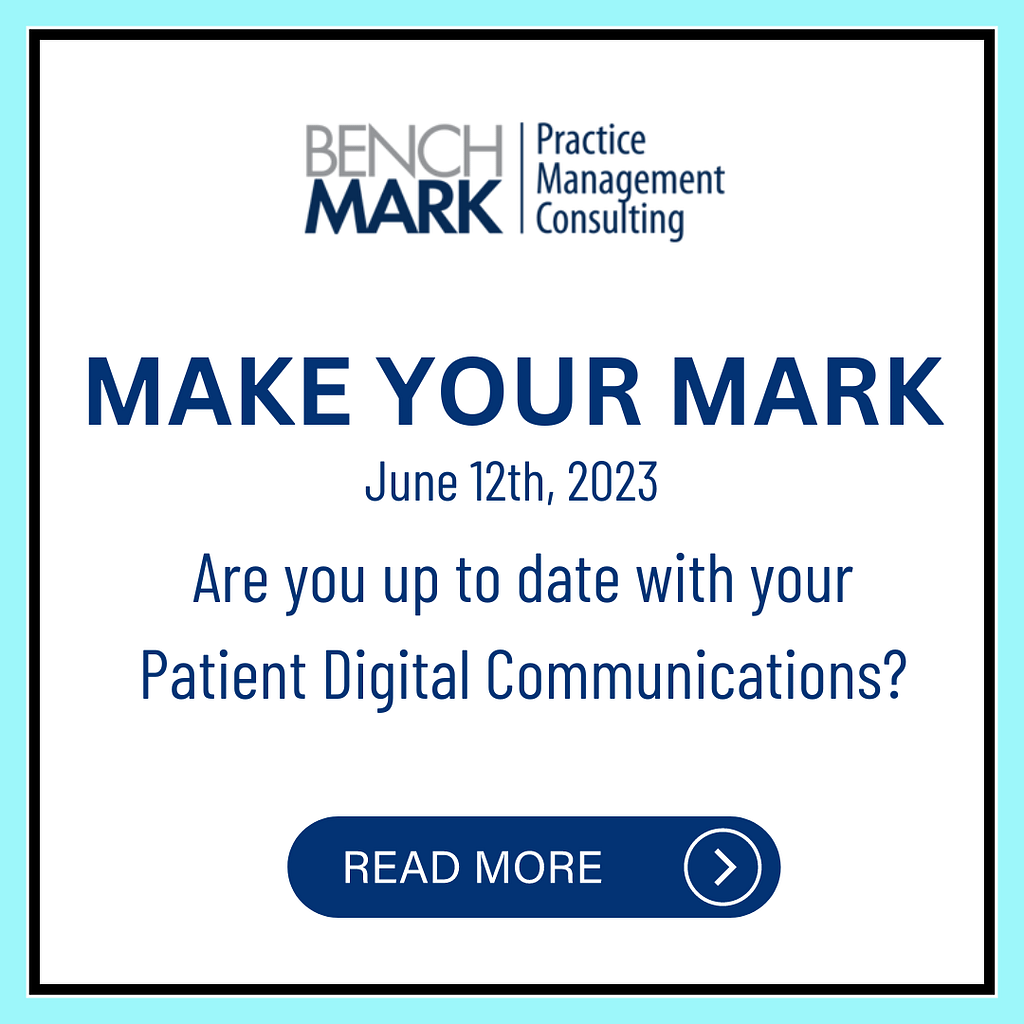For many years most dental offices have been using some form of digital communication for connecting with their patients. The issue I very often find in offices is that the system is not being used effectively to support patient needs and office protocols. Most offices have dipped their toes into the systems but have not gone back to decide if it is the time to increase the services they are using.
Most offices start off with the basic package of using the system for confirming appointments and perhaps sending out reminders to patients that they are due for hygiene appointments. This is a very effective system and will save you some time and work for your administrators, yet it will be far more effective if you use a system of both in person contacts and digital messages. This doesn’t mean replicating services, it means that for every two electronic messages you will want to have one in person contact. Yes, there are some patients that will ignore your messages no matter how you approach them but switching up your delivery methods will help with some patients.
Accessibility for patients to your office is extended to 24/7 delivery. A patient may remember to answer at a time that the practice isn’t open, but their text/email will be seen first thing in the morning. Most software programs now have the ability to allow your patients to book appointments online. At first, I was wary of this feature but once I learned more, I decided that I am all for it. The office has the ability to determine what kind of appointments can be booked online, which providers can be booked, and they must come from an existing contact in the computer or will be preset for specific appointment lengths (emergency appointments or new patient appointments).
By relying solely on phone calls there are sometimes mix ups with patients as to what was said, by using digital communication for some of your patient contacts you now have a permanent record of what was said. This is a feature that you hopefully don’t ever need to use but if you need a record of what was discussed then you will have it.
One feature that isn’t my favorite, is the ability to send out notice of same day openings to a mass number of patients. I realize that it does work sometimes but on the other hand it may be very annoying to some patients if you just sent them a text the day before about another opening. If there are too many texts/emails sent, then patients will begin to ignore them.
Having a team member dedicated to incoming texts and emails is imperative. Your team members may take turns, in that one attends to them in the mornings and the other answers in the afternoons. In our digital world we have come to expect quick responses when we send a text. Patients expect the same speed from an office as they do from a friend. Ensure that you are meeting your patients’ expectations with timely responses. By not having someone dedicated to the responses, it can easily happen that no one is taking responsibility for responding and patients may feel ignored.
Keeping up to date with technology and training can sometimes be confusing. My suggestion would be to contact your digital communication provider, or your practice management software (if your digital communication is with them) and have them provide you with an update of any features that they may offer that you haven’t signed on for. When they are working with you on this aspect have them checking to see if you are using your current program to the maximum of its abilities.
Digital patient communication programs work well, and can be an advantage when effectively communicating with patients by improving their overall experience with your office.




